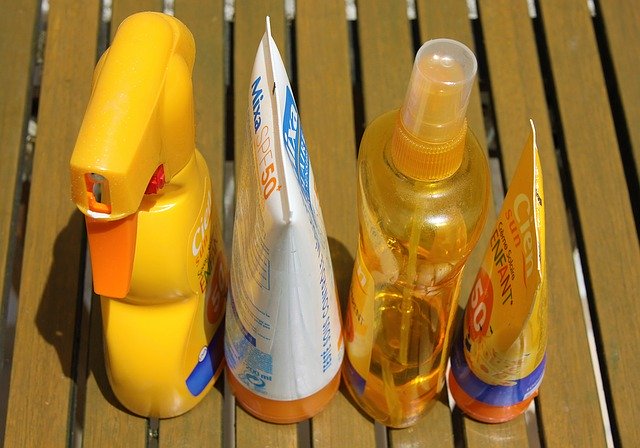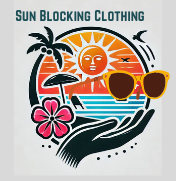I don’t know how to read a sunscreen label. Do you?

For me, the sunscreen label should help me know what I need. The fragrance, the ease of application, the cost. Those were the things that most swayed my choice of sunscreen products before I found out how to read a sunscreen label. What’re the criteria for you?
As stated in another blog on this site, for me Coppertone set the bar way too long for a good sunscreen. In reality, my sunscreen needs some help. I can’t just expect sunscreen along to do the job of protecting me from skin cancer. Protection From The Sun
Realizing, as I have, how outdated the requirements are for sunscreen products makes me know that I am going to have to learn to read labels. Those sunscreen labels have a ton of information too long ignored. This link will give you a list of what to look for on the label of the sunscreen products you use. https://www.accessdata.fda.gov/scripts/cdrh/cfdocs/cfcfr/cfrsearch.cfm?fr=352.10
It would be nice to have this product requirement up dated. However, as stated in a previous blog, this will take a while. There were issues brought to the attention of the FDA several years ago. As the process is quite slow, it will be several more years before new regulations are enforced.
The FDA gives manufacturers a lengthy time to review and change their formulas to meet the requirements. While this is necessary to allow them to remain in business, it is not so good for you, the customers.
Meanwhile, we must do our own homework and learn how to protect our skin from skin cancer. When I realized that the words on a sunscreen container should mean more to me than they did, I wondered if you needed a bit more clarification as well.
All About A Sunscreen Label
What we need on our sunscreen label:
- The words Broad Spectrum
- Number to indicate the strength of the product
- Directions for using
- Water-resistant
- Anti Toxinadant Protection
How To Read The Label
Recognize which of the items on the container actually tell you what you need to know. Often manufacturers fill the label with phrases that are to sell. Not to inform you of what you have in the product.
So it is important to read and understand the sunscreen label.
Why We Need The Words ‘Broad Spectrum’
Broad Spectrum is the phrase use to describe protection from both UVA and UVB Rays.
- UVA – Ultra violet A rays penetrate the skin deeper causing wrinkles and aging. This can happen even when exposed to indirect rays.
- UVB – Ultra violet B rays causing the sunburn and change in skin color. It is difficult to separate the rays when out in the direct sun. So a Broad Spectrum sunscreen is what we need. It will protect your skin in both direct and indirect sun. Help prevent skin cancer as well as help with the anti aging.
The Number On The Label
The number on the label tells you how much sun is being blocked from your skin.
The number of minutes that you can be in the sun before you start getting damage is determined in a lab where everything is perfect. With this in mind, I find that my life is not lived “under perfect conditions.” This is simply some researchers trying to make us have a starting point for how long we safe in the direct sun. To give some idea of how to protect our skin from aging and too much sun.
In the central part of Texas where I live, we need to pay attention. If the people in the lab with researchers helping then time the testing can go 15 minutes, I don’t feel assured this works for me. Or my family. We are living here under sun that is direct and hot. There is enough reflection into our house windows to sunburn. We get an overdose of direct sunlight.
You need to put your sunscreen before going out. You can start burning immediately. The voice of experience here! Do you remember how fast time passes when you are outside visiting? Enjoying yourself?
Time Passes Quickly
It reminds me of how quick a skillet of bacon can crisp. Keeping up with how long is long enough is difficult. Don’t get burned. Just put your sunscreen on first thing.
SPF is the format used to tell you on the label how strong the product is. Just another reason to learn how to read a sunscreen label.
SPF Numbers- Explained
SPF-15 will allow you to be out for while. as long as you reapply as directed. You are blocking some of the harmful rays, you will tan and reach sunburn stage quickly.
SPF-30 will allow you to be out a bit longer than SPF 15, as long as you are reapplying often. You will get some damaging sun pretty quick. You will have protection for awhile.
The SPF 15 or 30 are the lowest numbers the skincancer.org researchers suggest you use. Anything lower is not effective and you should not rely on any sunscreens that have less than 15 as an SPF factor.
SPF 50 offers more protection for your skin. This product should allow only about 5% of the suns harmful rays to your skin. You will need to reapply often. Any higher number offers no benefit.
Directions For Use On A Sunscreen Label
- The directions for use part of the label is important and you should pay attention to:
- Applying 15 minutes before going into the sun.
- Reapplying every 2 hours.
- Reapply after being in the water, sweating, as well as every two hours.
- Apply 1 oz. each time to make sure to protect your skin. ( golf ball sized amount)
- The product is only stable about 2 hours. After that it is not fully effective.
Water Resistant or Sweat Proof
These are terms that the FDA does not allow as beneficial terms. Many of the formulas for sunscreen are not waterproof. You must reapply after swimming or being active and sweating. Again, you must reapply to be protected.
Antioxidant Protection
Having a sunscreen with more protection for your skin against the sun damaging and ageing your skin is a better product. It will pay many benefits with long time use. Look for the words antioxidant protection in the list of active ingredients.
Summing Up
The other 2 concerns for me are:
The chemicals used to make the sunscreen. They are in the product to make it stable and effective. From that perspective, they are important. No one wants to purchase a bottle of sunscreen and it becomes watery and smells unpleasant.
The problem is that for some, these chemicals could cause mutations that result in cancer. The tests I could find that published reports stated that the chemical could remain in your system after application up to a week. This was with only 2 applications of the product. The FDA says we must reapply every 2 hours or after being in the water or sweating. So, in a full day, this could cause a build-up of toxic chemicals.
The 2nd concern for me is remembering to read the label for the expiration date. If you buy a bottle of sunscreen in October 2020, was it made in 2017? or 2020?
If the product isn’t stable without these chemicals added, that means I will be exposed. What if I am the one that isn’t reflected in the testing? What if my system absorbs more of the cancer-causing chemicals.? I will be glad to see this sorted out, and the FDA think of the safety of the population it is set up to protect.
Extra Concerns
The best product for you is one you will use. So consider these suggestions when shopping for your sunscreen. Consider using sun blocking clothing as well as sunscreens for an easier way to get protection from the suns damaging rays.
Enjoy being out in the sun and protect yourself with a 2-way approach to taking care of yourself with both products.
Beware the manufacturer’s tendency to try to sell the product by using the label. Ignore the selling statements and pay attention to what you need to know. Read the sunscreen label for what is in the product and how to use it.
